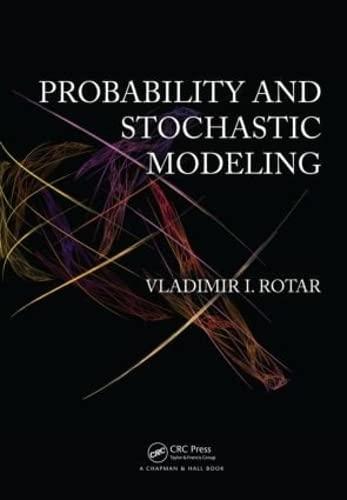Consider two queueing systems. The first has two servers; the service time for each is exponential with
Question:
Consider two queueing systems. The first has two servers; the service time for each is exponential with parameter μ. The second system has a single server whose service time is exponential with parameter 2μ; that is, the single server in the second system works twice as fast as each server in the first system. The flows of arrivals for both systems are Poisson with the same parameter λ t and X̃t the respective numbers of customers at time t in the above systems with two and one servers. Regarding characteristics of these processes, like θk and pik, those that correspond to the second process, will also be marked by tilde˜.
(a) Reasoning heuristically, conjecture in which system we should expect more customers. Where do you expect a larger queue? (Advice: Compare the arrival and departure rates for both systems for all possible states: 0,1,2, ... .)
(b) Not computing precisely the stationary distributions, show that in the stationary regimes, for any k,![]()
Comment on this result. Show that, in particular, from (3.2) it follows that E{Xt} ≥ E{X̃t}. (Advice: First, realize that θk = 2˜ θk for all k ≥ 1. Show that this implies that π0 0, and πk > ˜ πk for all k ≥ 1. Keep also in mind that P(Xt ≤ k) = 1− Σ∞m=k+1 πm ≤ 1−Σ∞m=k+1 ˜πm.)
(c) Find the stationary distributions for both systems.
(d) Let Yt and ˜Yt be the respective sizes of the queues. Prove that in the stationary regimes, for any k,![]()
Comment on this result. Show that E{Yt} ≤ E{˜Yt}. (Advice: Show that for all k ≥ 1, the probability P(Yt = k) = πk+2 ≥ ˜πk+1 = P(˜Yt = k}.)
(e) Compute and compare the expected times newly arriving customers spend in each system.
Step by Step Answer:






